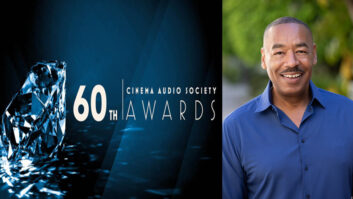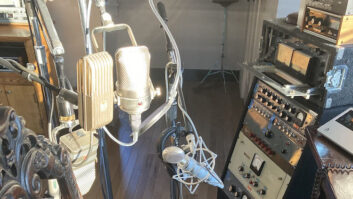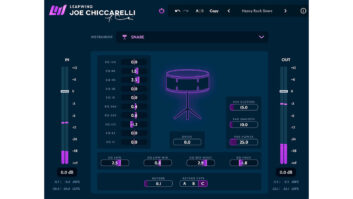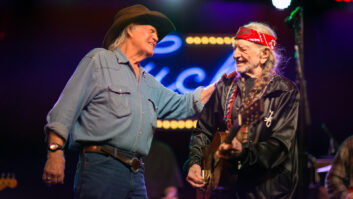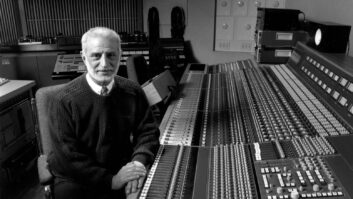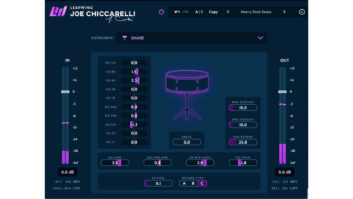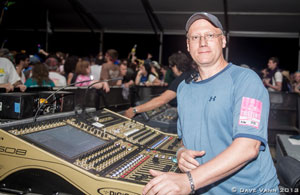
Joe Keiser mixes ZZ Top at Bonnaroo 2013 on a DiGiCo SD8
Photo: Dave Vann
What was it like to mix this particular festival: What are the logistics like? What sorts of adjustments did you need to make?
I have done Bonnaroo before, but what made this one a little different was the fact that we couldn’t make any real noise before going on, because of interference with the other stages. We never soundcheck anyway, but on this [festival] I had maybe 3 or 4 minutes to tune the P.A. before starting the show. I do have to say that the P.A. sounded very good without doing much EQ, so from the start I was able to get the blend of the instruments together pretty quickly since I wasn’t dealing with sonic issues of the system itself.
The stage was covered by a very large tent, as was the mix position, but it didn’t seem to cause many issues with sound—which is not always the case. Some of these tent gigs can be more of a handful than a large noisy arena. Luckily I was able to mix set up on the ground, with the audience. There was a large FOH riser that was a few feet in the air [that] I noticed that seemed to be the worst spot in the venue—[which is] often the case being on a riser.

ZZ Top at Bonnaroo 2013, from left: Dusty Hill, Frank Beard and Billy Gibson
Photo: Dave Vann
Which console and P.A. did you work on at Bonnaroo? How were the console and P.A. for you?
I want to say the P.A. was a Meyer rig. Again I was really impressed with the sound of the rig. I also thought it was flown in a good position in relation to the stage. [Positioning it] slightly downstage a little helps a lot. Sometimes gigs like this can have a stage setup that only allows for the P.A. to be slightly upstage and a little behind the microphone line. The subs were [arranged] in cardioid fashion and it worked well for this gig. Keeping that sub off the stage is a big deal for this band. Our singer, Billy Gibbons, doesn’t use ear monitors. He mainly listens to the P.A. for reference, so too much audio spill back onto the stage can really change things for him as well as for me. As far as consoles we have been using DiGiCo consoles for quite awhile. [Monitor engineer] Jake Mann and I are big fans of the DiGiCo consoles. We are both using the 24-fader SD8 for this gig—small but very powerful with features and flexibility. It can be a big help in allowing me to fit in to that mix position that I want on these festivals.
With ZZ Top, where is the emphasis in your mix, and how is it determined within each song?
With ZZ I’d say the emphasis is that dirty blues sound that is built around Billy’s guitar and Dusty [Hill]’s grungy bass sound. The bass has a lot of midrange, intentionally—grind-y and kind of…angry, I guess is how I’d describe it. It sits pretty loudly in the mix with the guitar. I use a multiband compressor on the SD8 to help me carve that bass around the guitar without just chopping out all those midrange frequencies. When I get that little pocket in there for the bass to wrap around that guitar and snare, it works quite well.
At times the vocal a bit more subtle in the mix than, say, the ’80s era of the band, which leans a little more on those lyrics that everyone knows. You get into a song like “La Grange” and as soon as that signature guitar intro starts, that pretty much commands the focus for the rest of that tune. Keeping that guitar/bass relationship and the signature snare shuffle of [drummer] Frank [Beard] is what drives this mix. Nothing too fancy in the mix—just solid blues-driven rock tunes.
Visit ZZ Top online at www.zztop.com.

